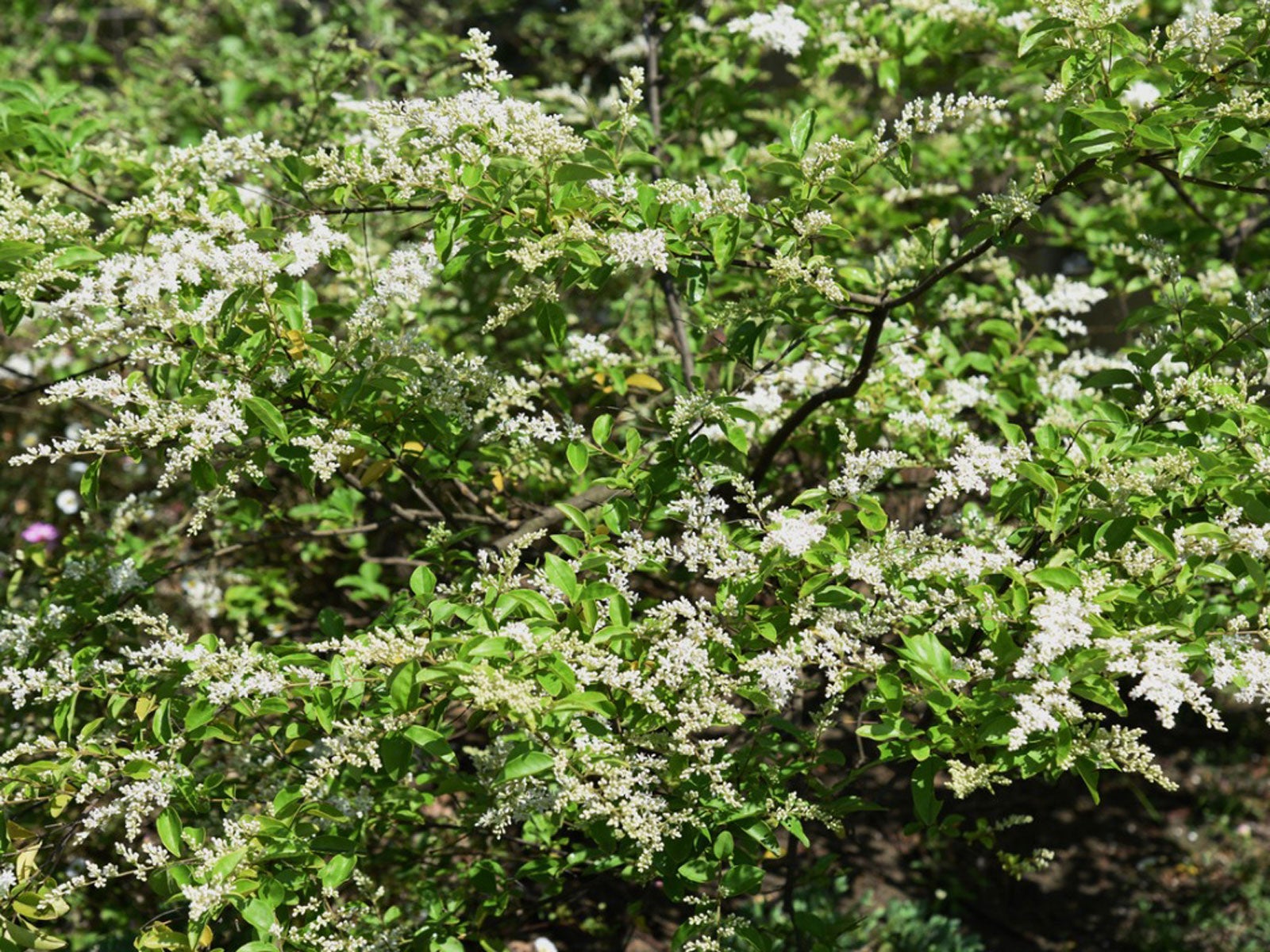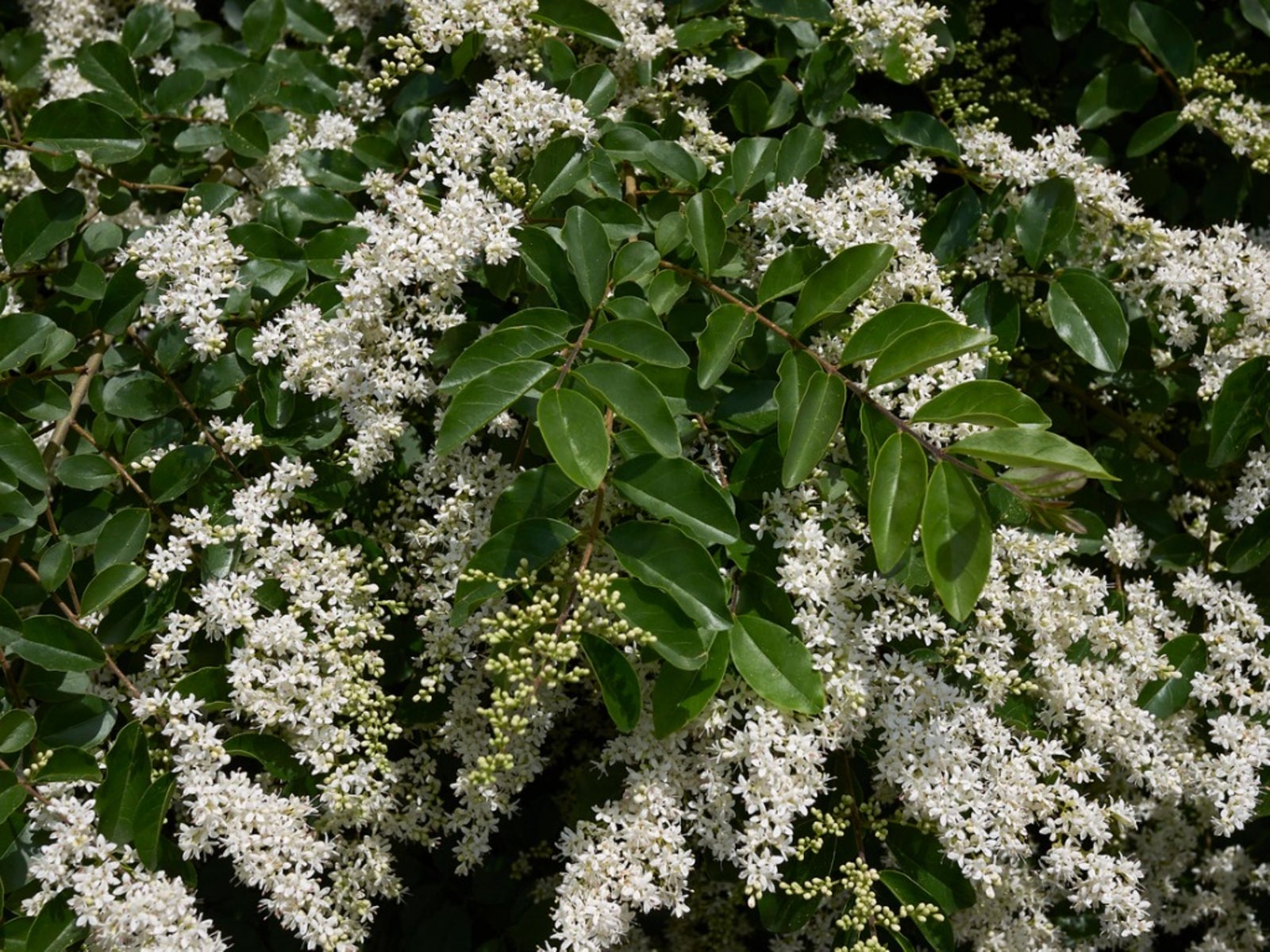Cutting Back Privet: How And When To Prune Privet Hedges


Privet hedges are a popular and attractive way of delineating a property line. However, if you plant a hedge, you’ll find that privet hedge pruning is a must. If you are wondering when to prune privet hedges or how to prune a privet hedge, read on. We’ll provide tips on cutting back privet.
Pruning Privet Hedges
Privet (Ligustrum spp.) is an excellent shrub for hedges. It has oval or lance-shaped leaves and grows dense, compact foliage. Privet is an evergreen bush in USDA plant hardiness zones 8 through 10. Privet works well for tall privacy screens. It is one of those shrubs that make good hedges 5 feet (1.5 m.) tall or taller.
Privet gets leggy and uneven over time though. In order to keep these hedges looking neat and attractive, you’ll definitely need to start privet hedge pruning.
When to Prune Privet
You’ll want to undertake these pruning steps in late winter. That is, removing damaged branches or opening the interior of the shrub should be done before spring growth begins. When to prune privet by trimming the outside of the hedge? This type of privet hedge pruning should take place in midspring after the annual growth has begun.
How to Prune a Privet Hedge
Privet hedge pruning involves cutting back privet shrubs. Pruning privet hedges requires some effort, but it is worth the time and energy. You’ll need to wear gloves since privet sap causes irritation and rashes.
So how to prune a privet hedge? The first step in privet hedge pruning is to trim out crossing branches. You’ll also want to keep cutting back privet to remove damaged or dead branches. Remove them at their base with loppers. Once you finish this, remove several large branches from the inside of each shrub to open up the center of the hedge.
Use bypass pruners for this, cutting back each branch to a side branch. In time, you’ll want to trim and shape the outside of the privet hedge. You first want to determine how high you want your hedge. Then get several stakes of that height and plant them in the ground toward the center of the hedge. Tie a string between the stakes.
Gardening tips, videos, info and more delivered right to your inbox!
Sign up for the Gardening Know How newsletter today and receive a free copy of our e-book "How to Grow Delicious Tomatoes".
Shear the top of the privet along the string line, then shear the face of the hedge down to the bottom in a diagonal downward slope. The hedge should be narrower at the top than the base on each side in order to allow light to touch the entire hedge face.
To rejuvenate a privet hedge, cut the entire hedge back to within 12 inches (31 cm.) of the ground. Do this in late winter. The shrubs re-sprout after being cut back hard.

Teo Spengler is a master gardener and a docent at the San Francisco Botanical Garden, where she hosts public tours. She has studied horticulture and written about nature, trees, plants, and gardening for more than two decades. Her extended family includes some 30 houseplants and hundreds of outdoor plants, including 250 trees, which are her main passion. Spengler currently splits her life between San Francisco and the French Basque Country, though she was raised in Alaska, giving her experience of gardening in a range of climates.
-
 Looking For Plants To Give You The Soft And Fuzzies? Try These 5 Fuzzy Leaf Plant Options
Looking For Plants To Give You The Soft And Fuzzies? Try These 5 Fuzzy Leaf Plant OptionsLovers of texture, drama, silver foliage and tactile plants will adore these special sensory garden additions. These fuzzy leaf plant options will leave you all aglow
By Susan Albert
-
 Get Ready For A Summer Of Hummers! Grow These Full Sun Hummingbird Plants and Flowers
Get Ready For A Summer Of Hummers! Grow These Full Sun Hummingbird Plants and FlowersIf you’re lucky enough to enjoy a sunny backyard, make sure you are maxing out on your pollinator opportunities and grow these full sun hummingbird plants and flowers
By Tonya Barnett
-
 Getting Rid Of Chinese Privet. How To Kill Chinese Privet Shrubs
Getting Rid Of Chinese Privet. How To Kill Chinese Privet ShrubsChinese privet weeds have begun springing up in forests and other areas where it has overtaken native plants.
By Becca Badgett
-
 Ligustrum Care: Information On How To Grow Ligustrum Shrubs
Ligustrum Care: Information On How To Grow Ligustrum ShrubsLigustrum plants, also known as privets, tolerate a wide range of conditions and are among the easiest shrubs and small trees to grow. Learn more about planting ligustrum shrubs and their care in this article.
By Jackie Carroll